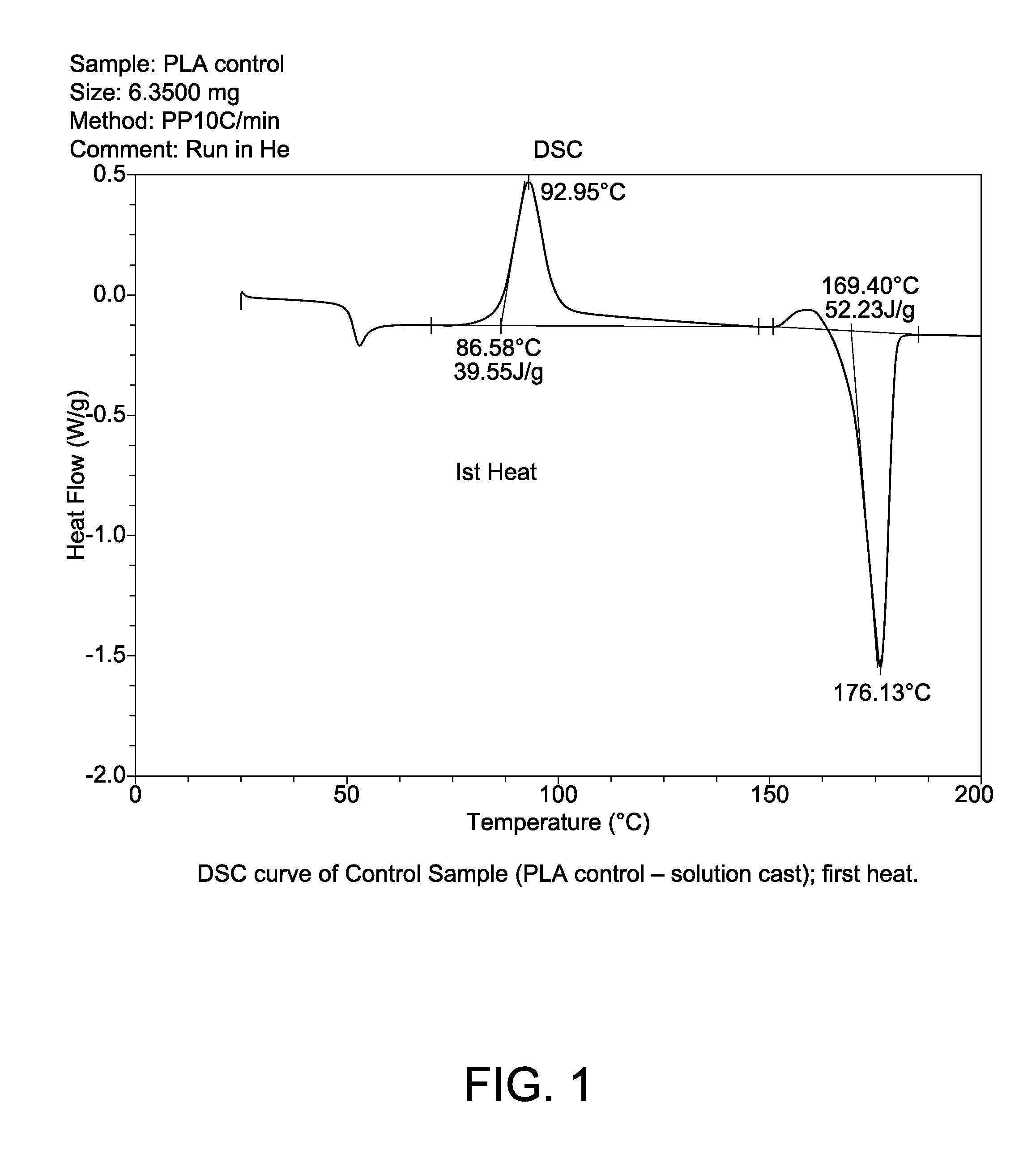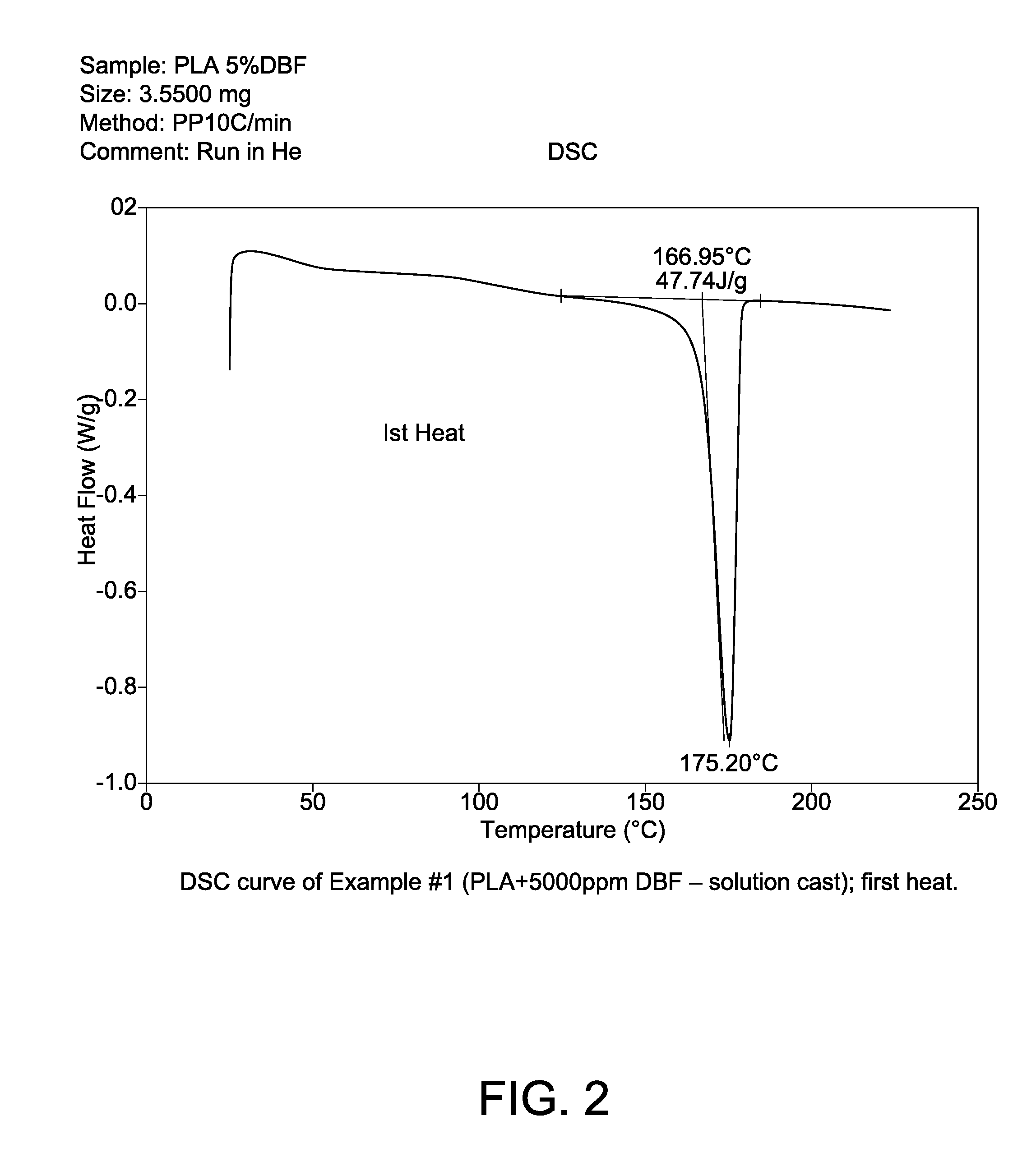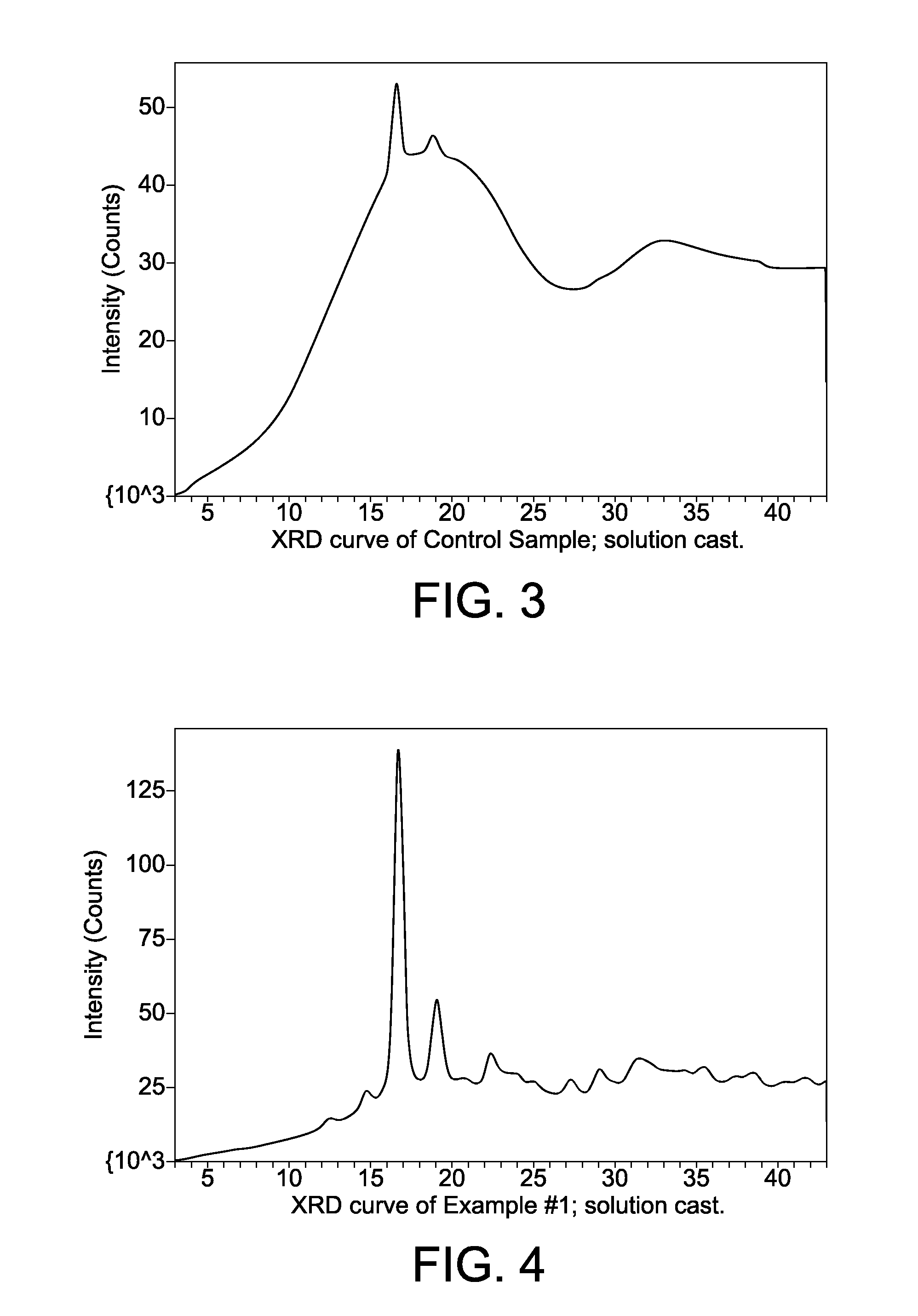Plasticizer for thermoplastic polymer materials
a thermoplastic polymer and material technology, applied in the direction of dyeing process, weaving, catheter, etc., can solve the problems of unsatisfactory need for a new material composition or method to modify the thermoplastic polymer material to increase the relative amorphous content, few successful, and relatively hard and rigid conventional thermoplastic polymers, etc., to increase the relative toughness of the base or underlying, increase the strain at break and increase the stress at break
- Summary
- Abstract
- Description
- Claims
- Application Information
AI Technical Summary
Benefits of technology
Problems solved by technology
Method used
Image
Examples
example 1
4,5-Dibromofluorescein (DBF, 5000 ppm) in polylactic acid
[0062]An amount of 1.0 gram polylactic acid (molecular weight Mn ˜30,000; Mw ˜55,000) was dissolved in 20 ml of chloroform at ambient temperature with stirring. The clear solution was separated into two equal 10 ml aliquots and to one of which was added 100 mg of dibromofluorescein and the mixture stirred to dissolve the dye. Both solutions were solvent cast by pouring into respective aluminum weighing pans (6 cm diameter×1 cm depth) and the solvent evaporated overnight (8-12 hrs.) in a fume hood. The films were then removed and analyzed.
example 2
4,5-dichlorofluorescein (DCF, 5000 ppm) in polylactic acid
[0063]The procedure described in example 1 was repeated except that dichlorofuorescein was used.
example 3
4,5-diiodofluorescein (DIF, 5000 ppm) in polylactic acid
[0064]The procedure described in example 1 was repeated except that diiodofluorescein was used.
PUM
| Property | Measurement | Unit |
|---|---|---|
| Temperature | aaaaa | aaaaa |
| Temperature | aaaaa | aaaaa |
| Temperature | aaaaa | aaaaa |
Abstract
Description
Claims
Application Information
 Login to View More
Login to View More - R&D
- Intellectual Property
- Life Sciences
- Materials
- Tech Scout
- Unparalleled Data Quality
- Higher Quality Content
- 60% Fewer Hallucinations
Browse by: Latest US Patents, China's latest patents, Technical Efficacy Thesaurus, Application Domain, Technology Topic, Popular Technical Reports.
© 2025 PatSnap. All rights reserved.Legal|Privacy policy|Modern Slavery Act Transparency Statement|Sitemap|About US| Contact US: help@patsnap.com



